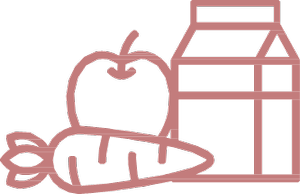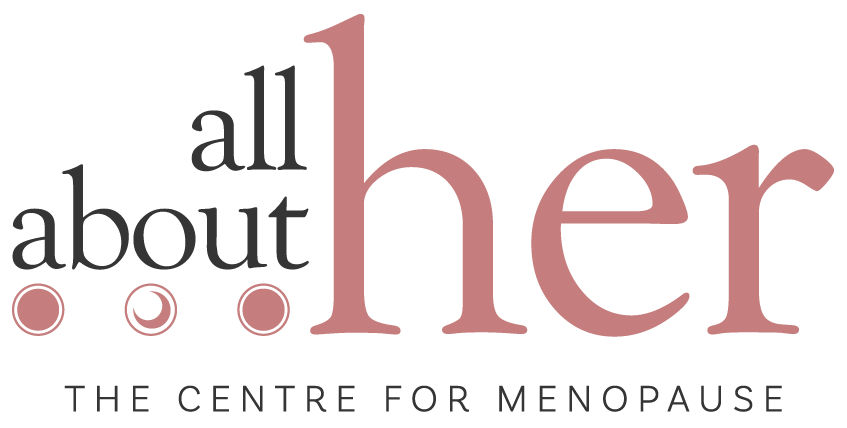Perimenopause: Nutrition & Movement
With all the physical, psychological and cognitive changes that perimenopause can present, it can significantly impact an individual’s* health and well-being.
This transition presents a window of opportunity to double down on self-care and positive lifestyle factors as part of a holistic approach to health and wellbeing, through perimenopause and beyond. Of all the lifestyle interventions available, movement and good nutrition are key fundamentals.
Read on to find out more or download the free guide to read later.

Does Perimenopause Cuase Weight Gain?
Whilst many individuals experience weight gain as they age, particularly in
perimenopause, this is likely more due to the natural process of aging and the lifestyle changes that come with it, rather than menopause itself.
There is evidence to suggest that hormonal changes are associated with significant changes in body composition and the increase of both belly and visceral fat (1). This poses an increased risk of chronic diseases including heart disease, type 2 diabetes, breast cancer, and dementia (2), so managing these issues through a holistic approach including movement and nutrition is fundamental in supporting midlife health.


Supporting Perimenopause with Lifestyle
Daily activity and healthy nutrition can positively impact perimenopausal symptom severity, mental health, stress resilience and chronic disease risk as well as decreasing bone loss and increasing muscle strength (2,4,5,6).
Evidence around specific perimenopause nutrition interventions, in terms of adherence to a specific diet or the use of specific foods and supplements to support symptoms, is unclear (5).
However, there is good research to suggest that an overall healthy diet without excess caloric intake does contribute to a healthy weight and overall health and well-being.
At this time of life, ditching fad diets and going back to the basics of eating simple nourishing foods is the most sustainable & healthy option

Benefits of Movement
The World Health Organisation Guidelines (3) tell us that physical activity poses benefits for improved mortality, cardiovascular disease, high blood pressure, cancers, type-2 diabetes, and sleep. It also reduces the symptoms of mental health disorders including depression and anxiety, andimproves cognitive health.
Despite these clear benefits, globally, 1 in 4 adults do not meet the recommended levels of physical activity, including:
Physical activity of at least 150 to 300 minutes of moderate intensity (or at least 75-100 minutes of vigorous intensity) throughout the week and
Muscle strengthening activity at a moderate or greater intensity that involves all muscle groups
And limiting the amount of time spent being sedentary

Benefits of Healthy Nutrition
A healthy diet can help protect against chronic diseases including diabetes, heart disease, stroke and cancer, and an unhealthy diet is linked to global risks to health.
Whilst there is so much (often conflicting) nutrition advice available, WHO guidelines include balancing energy expenditure and energy intake, shifting from saturated fats and trans-fats to unsaturated fats and limiting both simple sugars and salt all help maintain a healthy weight and contribute to overall health (3).

Alcohol consumption - What is Safe?
Whilst historically, the evidence around safe alcohol consumption has been mixed, a recent global study suggests that when it comes to alcohol consumption, there is no safe amount that does not affect health (7).
Many notice that alcohol makes their perimenopausal symptoms worse, (mood swings, hot flushes, night sweats, sleep quality) and there is also evidence to suggest that alcohol consumption is linked to early-onset vasomotor symptoms (8).

Actionable Steps
When approaching perimenopause as a window of opportunity, these simple steps can improve the perimenopause experience and improve the way we age post menopause.
Evaluate Nutrition: it’s time to enjoy eating nourishing, fresh foods. Aim to eat mostly from the core food groups, and avoid too many sugary and highly processed foods.
Rethink Movement: Daily movement including aerobic and resistance activities each week to boost your metabolism and maintain muscle mass. Include incidental exercise and limit sedentary activities.
Prioritise Sleep: Develop good sleep hygiene habits and self-care which includes periods for relaxation to promote quality sleep and better manage stress.
Stay Hydrated: Supporting health and well-being bydrinking at least 6-8 cups of water per day, more when exercising or in hot weather
Time in Nature: Combine movement with nature, which helps with stress management and when combined with light exposure in the morning can help aid sleep quality.
Limit or Swap Out Alcohol: Reduce alcohol or consider using non-alcoholic alternatives to reduce overall health risks, symptom severity and sleep quality.
Address menopausal symptoms: if symptoms are significantly impacting your ability to enjoy life and function, seeking professional support to better manage them can provide a foundation to then improve lifestyle practises


All About Her Centre for Menopause is a collective of health professionals for Australian women whose lives are impacted by menopause, and education and training for the psychologists and health professionals who support them.
We exist to ensure that perimenopausal, menopausal and postmenopausal women feel understood, seen and supported at every step along the way.
References:
References: (1) Weight, A. F. (2021). Weight, shape, and body composition changes at menopause. Journal of
Midlife Health, 12(3), 187-192.; (2) Hao, S., Tan, S., Li, J., Li,
W., Li, J., Cai, X., & Hong, Z. (2022). Dietary and exercise
interventions for perimenopausal women: A health status impact study. Frontiers in Nutrition, 8, 752500.; (3) World Health Organization. (2020, November 25). WHO
guidelines on physical activity and sedentary behaviour.
Geneva: World Health Organization. Retrieved from
https://www.who.int/publications/i/item/9789240015128;
(4) Dąbrowska-Galas, M., Dąbrowska, J., Ptaszkowski, K., & Plinta, R. (2019). High physical activity level may reduce menopausal symptoms. Medicina (Kaunas) , 55(8), 466.;
(5) Yelland, S., Steenson, S., Creedon, A., & Stanner, S. (2023). The role of diet in managing menopausal
symptoms: A narrative review. Nutrition Bulletin, 48(1), 43-65.; (6) Nelson, D. B., Sammel, M. D., Freeman, E. W.,
Lin, H., Gracia, C. R., & Schmitz, K. H. (2008). Effect of
physical activity on menopausal symptoms among urban women. Medicine & Science in Sports & Exercise, 40(1), 50-
58.; (7) GBD 2020 Alcohol Collaborators. (2022).
Population-level risks of alcohol consumption by amount, geography, age, sex, and year: A systematic analysis for
the Global Burden of Disease Study 2020. The Lancet,
400(10347), 185-235.; (8) Manthey, J., Shield, K., & Rehm,
J. (2022, November 19). Alcohol and health. The Lancet , 400(10365), 1764-1765.; (9) Kistler-Fischbacher, M.,
Weeks, B. K., & Beck, B. R. (2021). The effect of exercise intensity on bone in postmenopausal women (part 2): A meta-analysis. Bone , 143, 115697.
*All About Her - The Centre for Menopause acknowledges that all people born with ovaries and who live long enough will experience the menopause transition. This includes cisgender women, transgender men, non-binary individuals, and any other individual with ovaries. We use the terms
individuals/people to be inclusive of the many who do not identify as women, but who will nonetheless experience this significant life stage.
Disclaimer: The information presented is for general understanding only and should not substitute professional medical advice. If you are concerned about your health, talk to your doctor or healthcare team for personalised guidance.
© All About Her Centre 2024
